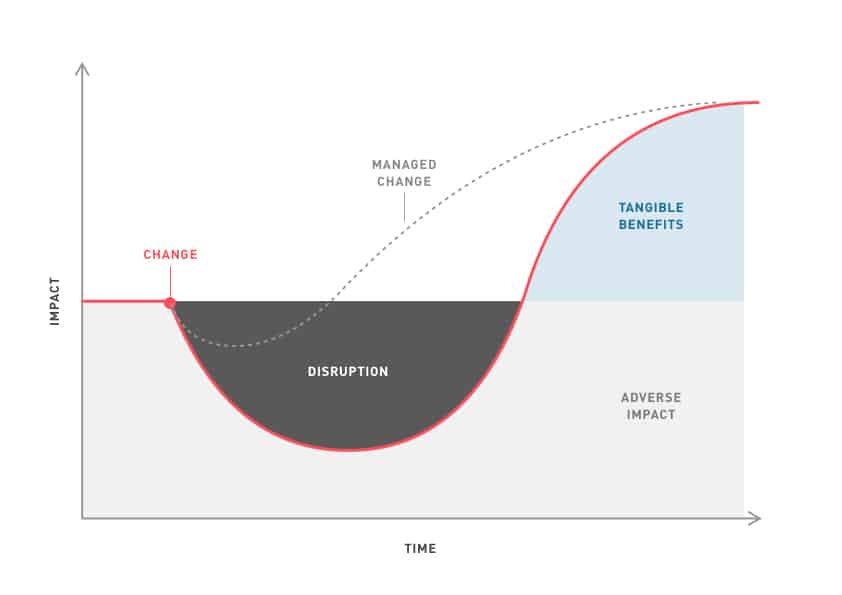Article summary
Delivery Leads are arbiters of the agile process. They create predictability and mitigate risks in spaces that are anything but predictable. DLs do this by ensuring that the team has a few sprints of ready work that has requirements and estimates. They schedule demos every couple of weeks and facilitate testing as soon as the team has working software. Additionally, they don’t shy away from the hard conversations about value, product-market fit, and scope. Often, all of this work is rooted in, you guessed it, change.
People, their roles, and the processes that foster collaboration all must change to support what is to come. This is often the most challenging part of our work, but the challenge isn’t new.
Change has this predictable way of creating tension on teams. We all want what’s at the finish line (easier process, more time for more important problems, more insight into what’s happening) but getting there is painful. It’s hard to let go of things we had control of and especially hard if the change means more work in the short term.
One of the real dangers of this period of the project is that it lingers for too long. People lose hope that things will get better. It starts to feel like change for change’s sake, and that’s not doing anyone any good. To alleviate the tension and speed things up, teams pull back on innovative ideas, launching a product no one on the team is thrilled about and creating an experience for customers that was almost great.
This part of change, the uncomfortable part, is inevitable. I don’t have advice that makes it go away, but I do believe some practices can make it manageable.
Communicate early and often.
Once you’ve identified the needed change, communicate it to everyone up front. Think of it like a roadmap through the uncertainty:
- What’s going to happen
- How it will change a process or role
- When it will happen
- How we’re mitigating potential risks
- What you need from everyone to make it work
This is especially helpful if there are a lot of cascading changes. Be sure to check in throughout the change. Reiterate what’s been done, and remind people what’s next. If things got off track, acknowledge it and show the team will get back on track. It builds confidence and trust amongst the team to know that someone is managing the change.
Check in with people.
The hardest change is when our roles or processes are changing. We could use support. As a consultant, I’m often not directly in that position. I’m asking this of others, so I must try to support them however I can.
Support could look like:
- a conversation. You can check how the new role is fitting, what new challenges they’re experiencing, and what ways they’re learning and growing through this change.
- a cheat sheet or video walkthrough for a new process. This could help them remember what is new to the process and support training others.
- drafting a message or an email. This gives the person you’re helping some language to start with so they can manage expectations with their teams or customers.
- advocating to leadership for a new hire or re-segmenting certain job responsibilities and activities.
The most important thing here is follow-through. Listening is great and taking action is even better.
Mind the upswing
At some point, the team will move out of the disruptive part of change and new processes will take hold. People will see the benefits of the change, and things will be looking up.
Remember, old habits can die hard. If someone on the team is back to their old ways, perhaps a gentle reminder is all that’s needed. They may also default to old ways because the new way doesn’t totally solve their problem. This is an opportunity to meet them where they’re at and see what adaptations are needed to make it better.
I think about this phase of disruptive change as a chance to put some wind in our collective sails. We designed this new software, new process, to make things better. When we’re all invested in the same direction, us against the problem, we can accomplish so much more and in a shorter period. It’s also a lot more enjoyable to feel part of the team and partially responsible for the overall success of what you’re delivering.

